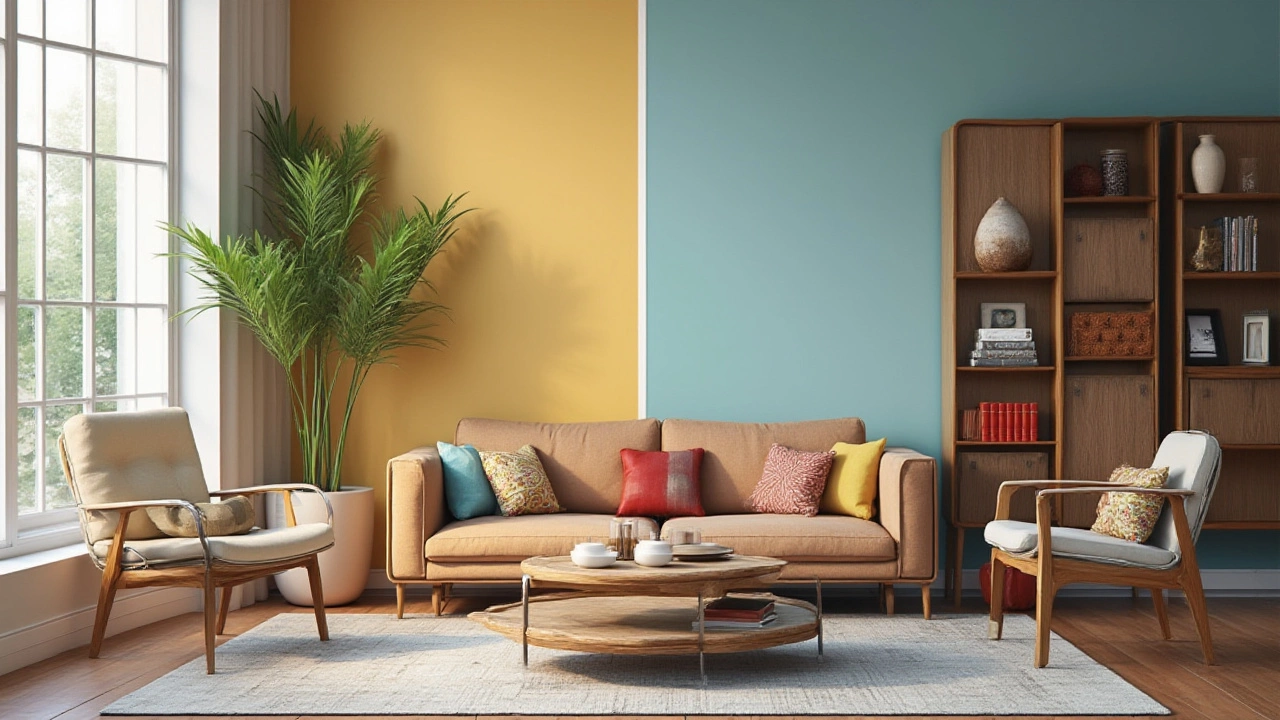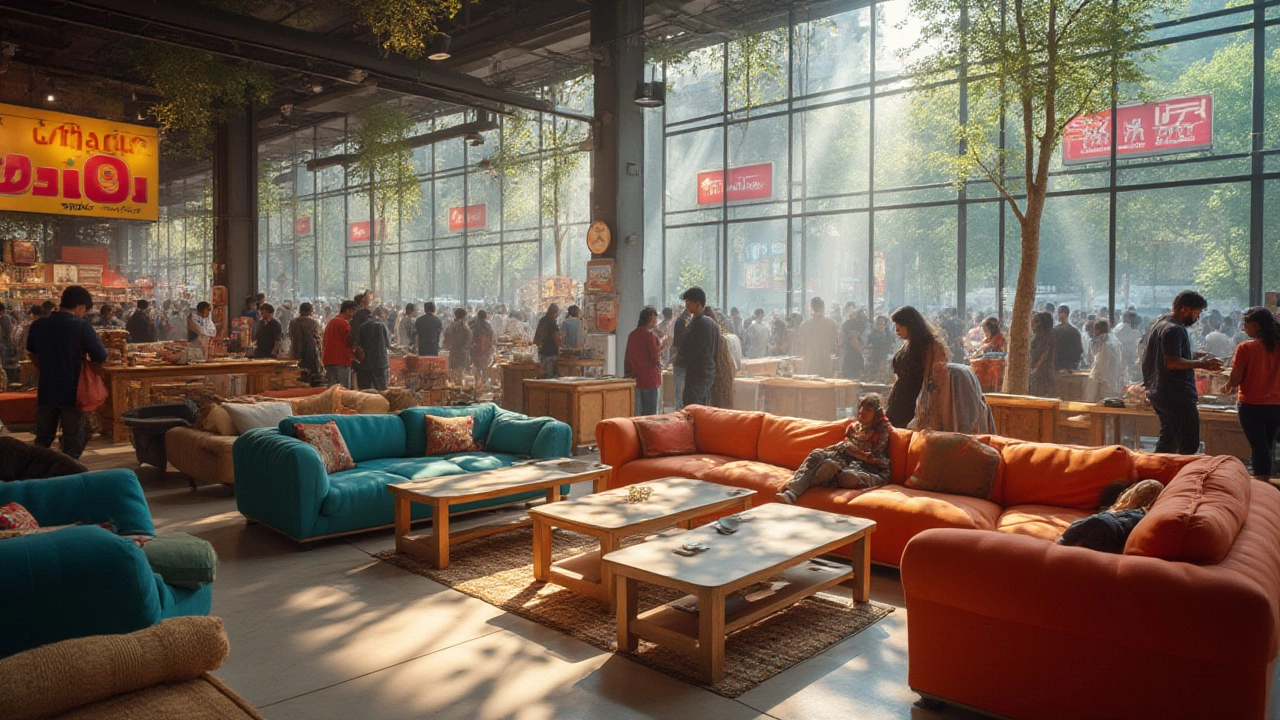If you thought IKEA was going to have an easy ride in India, think again. The Swedish giant rolled into Indian cities with their usual giant blue stores and pocket-friendly flatpacks, but they’ve landed smack in the middle of a furniture free-for-all. The Indian furniture market is enormous—worth over $54 billion in 2023, according to CRISIL Research. But what’s wild is, nearly 90% of it is still dominated by unorganized local carpenters, mom-and-pop shops, and dusty markets that smell like varnish and chai. That’s a twist IKEA probably didn’t expect at their Swedish strategy meetings, huh?
The Indian Furniture Scene: More Than Just Chairs and Beds
This market doesn’t wait for anyone to catch up. Local tastes and space needs mean that generic, ‘one-size-fits-all’ furniture rarely works here. What excites Indians today? Multi-functional pieces (think a bed that hides a study desk or a coffee table with secret storage), premium wood like Sheesham and teak, and loads of customization. You see, furniture isn’t just about function here—families take pride in it, pass it down, and fit it perfectly to strange Delhi-shaped rooms.
And here’s the kicker: urban Indians love browsing online for inspiration but still want to squish a cushion or test a drawer’s sturdiness before hitting ‘buy’. The market is rapidly shifting, but that mix of digital and traditional buying keeps everyone on their toes—foreign chains and desi players alike.
Who’s Taking On IKEA: The Real Competitors
Sure, IKEA’s bright blue stores may grab selfie-happy crowds, but its competitors have their own tricks. Here are some real heavy-hitters in this game:
- Godrej Interio: A power brand. Godrej has been around for decades, and people trust them to last. Their style? A mix of office and home furniture, plenty of Indian wood options, and heavy on customization. Godrej Interio pulls in customers who want reliability and Indian design—no flatpack confusion for your grandma.
- Urban Ladder and Pepperfry: These digital-first brands nailed the online furniture game. Both let customers try before they buy (through experience centers), offer everything from sofas to home accents, and deliver to over 200 cities. They also partner with local artisans—so made-in-India meets e-commerce savvy. By 2025, projections say online sales will hit about 20% of the total furniture market, up from 5% just five years ago, and these two are leading the pack.
- HomeTown: Known for trendy furniture and in-store design help. HomeTown appeals to urban middle-class families looking to revamp a room without blowing the budget. They offer free installation and, like IKEA, throw in kitchen design services—a hot trend for city apartments.
- Durian: Rising from the plywood trade, Durian is pushing modern designs but with a ‘solid wood’ vibe. They’re seen everywhere from glossy malls to TV ads—a real mainstream favorite for quality seekers.
- Local Carpenters and Custom Shops: Don’t underestimate the old-school. Many Indian homes still call the neighborhood carpenter for custom beds or wardrobes. Flexibility and face-to-face trust beat a QR code for tons of buyers.
The big advantage Indian brands have? Knowing local quirks—like how families need furniture to fit into awkward spaces, support joint family living, and withstand humidity!

Price Wars, Taste Battles, and Delivery Dramas
Here’s where things get spicy. IKEA is known for affordability worldwide, and it keeps cleverly targeting entry-level prices in India. A study by RedSeer showed that 60% of customers shopping for furniture online cite price as the key factor, and IKEA can land a basic chair for less than Rs. 1500. But Indian brands don’t always compete solely on price—they throw in free delivery, easy returns, and customization, which border on obsessive in this market.
Take Urban Ladder, for example—them rolling out ‘Assembly at Home’ services won them major brownie points among urban buyers who don’t want to fumble with Allen keys after work. Or Pepperfry’s quick-ship ‘ready to move in’ packages, which are perfect for people moving cities—a classic urban scenario.
Don’t forget how local shops adjust wood types based on climate—no point in buying pine in humid Chennai where it’ll warp. Kids’ furniture? Indian retailers often tweak designs for joint families where space-sharing is critical.
| Brand | Founded | Online/Offline Presence | USP |
|---|---|---|---|
| IKEA | 1943 (India: 2018) | Massive stores + online | DIY, low prices, global designs |
| Godrej Interio | 1923 | Online + 800+ stores | Strong legacy, Indian wood, customization |
| Urban Ladder | 2012 | Online + experience stores | Contemporary designs, curated range |
| Pepperfry | 2012 | Online + 180+ studios | Largest variety, local crafts, try-before-buy |
| HomeTown | 2010 | 55+ stores + online | In-store design, free assembly, budget focus |
| Durian | 1985 | 50+ stores + online | Solid wood, known reliability |
Fun Facts, Shopping Tips, and Where the Furniture Race Goes Next
India’s home makeover bug is real. Did you know that over 40% of Indian families buy new furniture right after moving to a bigger city, and more than half do some kind of online research before buying? Even more wild, IKEA’s Hyderabad store saw footfalls of over 3 million people in its first year—no easy feat, even for a global giant.
- When shopping, Indians often haggle—even in fancy showrooms. Many local brands now have ‘bargain counters’ where salespeople are trained to negotiate, old-school style.
- Home assembly is key: Always check if installation is included or chargeable. For busy urbanites, companies that offer free or paid setup (like Urban Ladder) are a huge relief.
- Customization rules: If you have tricky spaces or need modular furniture, look for brands with good design teams willing to tweak pieces to fit. Don’t settle for basic catalog picks.
- Check for wood type and build quality, especially in humid cities. Teak, mango wood, and engineered boards last longer than soft pine in Indian weather. Local shops often know this best.
- Green bonus: Many new-age Indian brands are using recycled wood and low-VOC finishes—good news if you’re eco-conscious.
The bottom line? While IKEA brings in global cool and scale, India’s homegrown competitors bring street smarts and cultural intuition. Brands like Urban Ladder, Pepperfry, Godrej Interio, Durian, and HomeTown may not match IKEA’s global footprint (yet), but their deep roots in local needs keep them relevant. As the furniture wars heat up, expect more innovation, funkier designs, and “Indianized” solutions all fighting for a spot in your living room.
